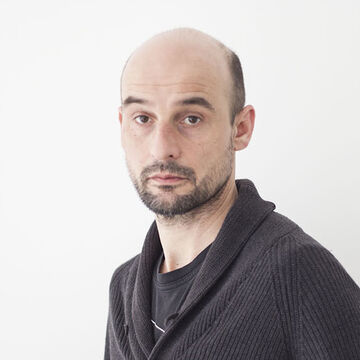| Black and White |
Photography |
2011 (002) |
Fall 2025 |
|
Description
This course explores the techniques and aesthetics of black and white photography, from exposure to final prints. Students will develop skills in analog darkroom and inkjet printing, contrast control, lighting techniques, and the impact of scale, paper, and film choices. Hands-on projects and darkroom experimentation will deepen technical abilities and creative expression. An adjustable film camera is required.
|
Class Number
1578
Credits
3
|
| Digital Light Projections |
Art & Technology / Sound Practices |
3050 (001) |
Fall 2025 |
|
Description
This course embraces the concept of projection as a broad field of art practice. Starting with the magic lantern, the course investigates the history of projection related practices that shape the parameters of visual perception and communication. Deconstructing the concept of the screen, the course focuses on projection in sculptural and installation contexts.
Microcontrollers and Adobe software is used in unorthodox ways to shape visual elements for digital light projection. History of visual, technical and conceptual use of light is accessed to investigate the interactions of projections with objects and space.
|
Class Number
1139
Credits
3
|
| Digital Light Projections |
Photography |
3050 (001) |
Fall 2025 |
|
Description
This course embraces the concept of projection as a broad field of art practice. Starting with the magic lantern, the course investigates the history of projection related practices that shape the parameters of visual perception and communication. Deconstructing the concept of the screen, the course focuses on projection in sculptural and installation contexts.
Microcontrollers and Adobe software is used in unorthodox ways to shape visual elements for digital light projection. History of visual, technical and conceptual use of light is accessed to investigate the interactions of projections with objects and space.
|
Class Number
1592
Credits
3
|
| Public Light and Space |
Art & Technology / Sound Practices |
4032 (001) |
Spring 2026 |
|
Description
Public Light and Space explores how artists use light to shape public environments, creating works that invite interaction, alter perception, and transform shared spaces. The course engages with histories and theories of public art while critically examining the dynamic role of light in selected movements and practices. Students will conceptualize and plan site-responsive projects for specific locations across Chicago, with attention to methods such as digital projection, controlled light sources, and light-responsive materials.
The course offers a distinctive opportunity: a collaboration with Public Sound & Space (led by Austen Brown) to produce new large-scale projection and sound works for Art on the Mart, the monumental projection site on the historic Merchandise Mart building. Each student team will design an original artwork to be exhibited nightly for six weeks, reaching an audience of nearly 300,000 viewers.
A sequence of technical workshops supports skill development, while visiting artists, critics, and community members provide feedback throughout the creative process. The semester culminates in the public debut of student works on one of the world's largest projection canvases.
|
Class Number
1124
Credits
3
|
| Public Light and Space |
Photography |
4032 (001) |
Spring 2026 |
|
Description
Public Light and Space explores how artists use light to shape public environments, creating works that invite interaction, alter perception, and transform shared spaces. The course engages with histories and theories of public art while critically examining the dynamic role of light in selected movements and practices. Students will conceptualize and plan site-responsive projects for specific locations across Chicago, with attention to methods such as digital projection, controlled light sources, and light-responsive materials.
The course offers a distinctive opportunity: a collaboration with Public Sound & Space (led by Austen Brown) to produce new large-scale projection and sound works for Art on the Mart, the monumental projection site on the historic Merchandise Mart building. Each student team will design an original artwork to be exhibited nightly for six weeks, reaching an audience of nearly 300,000 viewers.
A sequence of technical workshops supports skill development, while visiting artists, critics, and community members provide feedback throughout the creative process. The semester culminates in the public debut of student works on one of the world's largest projection canvases.
|
Class Number
1544
Credits
3
|
| Grad Projects:Photography |
Photography |
6009 (002) |
Fall 2025 |
|
Description
Taken every semester, the Graduate Projects courses allow students to focus in private sessions on the development of their work. Students register for 6 hours of Graduate Project credit in each semester of study.
|
Class Number
2346
Credits
3 - 6
|

